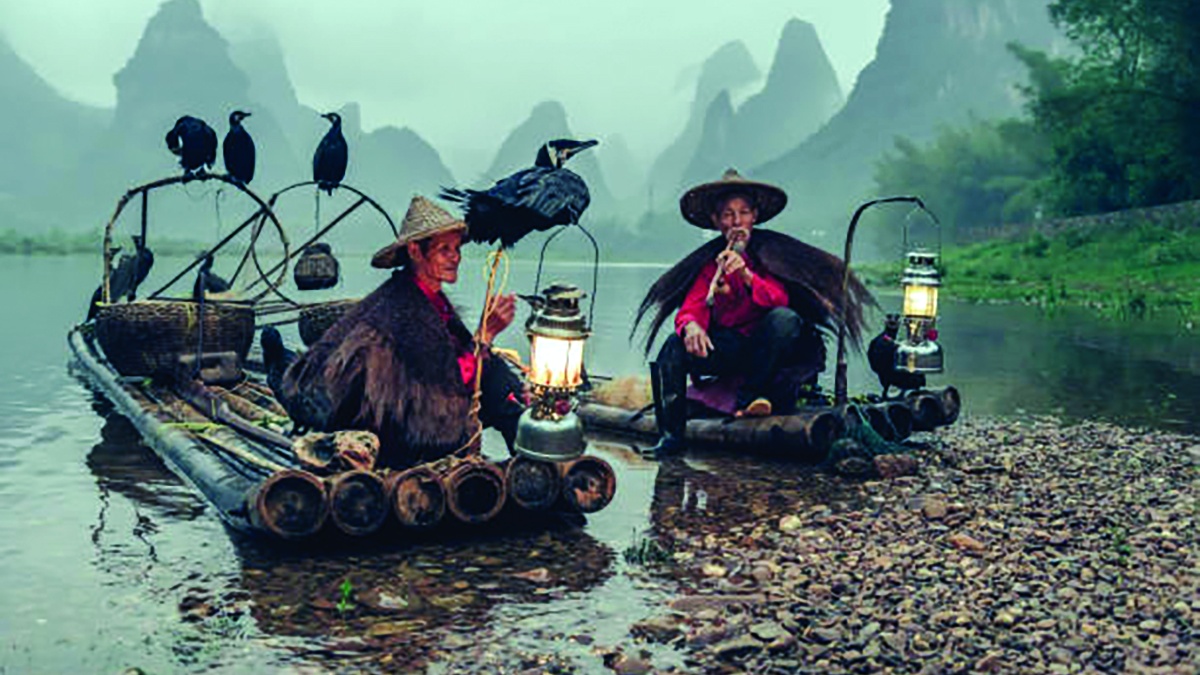Guilin and Yangshuo offer some of the most stunning natural scenery in China and anywhere in the world. Weathered limestone formations rise near vertically from flat land creating a dreamlike, mystical landscape that is timeless and breathtaking. It is no surprise this area features heavily in Chinese culture, a muse for landscape paintings, literary works and inscriptions. Its magnetic beauty cannot fail to leave a deep impression on those lucky enough to spend time there.
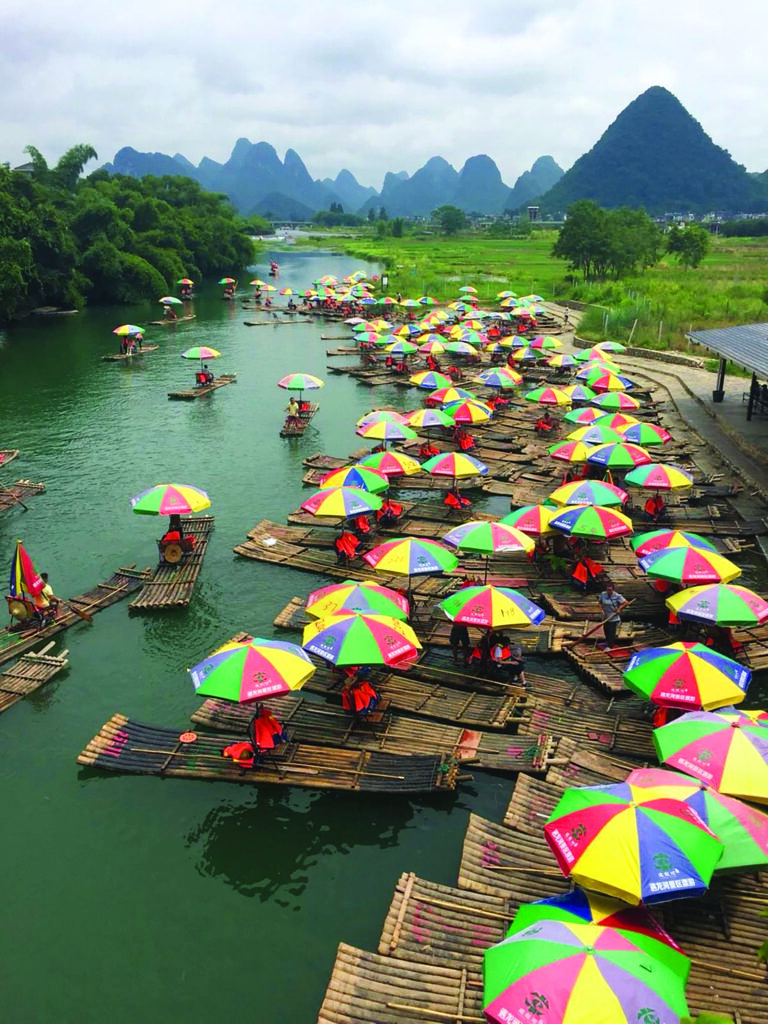
Guilin is the larger of these two conurbations in China’s southwest Guangxi province; it has long been a commercial centre and hub of rail, river and road transport in South China. Home to poets and artists through the ages, it is now a thriving tourist centre with low-rise buildings and a relaxed atmosphere. Major international hotels – some boasting luxury rooms with stupendous views – have been lured here and provide all-inclusive holidays. A fine range of dining experiences in Guilin embraces both Western and Asian dishes; Chunji Roast Goose restaurant is a local icon.
Guilin means ‘Sweet osmanthus forest’ and autumn sojourners will see and smell osmanthus blossoms all over town. Its plentiful limestone pinnacles are even more outstanding, studding the city itself and flanking the Li River as it winds its way to Yangshuo, an unforgettable 83-kilometre river trip to the south. This karst landscape was formed over millions of years as mildly acidic water slowly created rock towers and vast underground cavern systems.
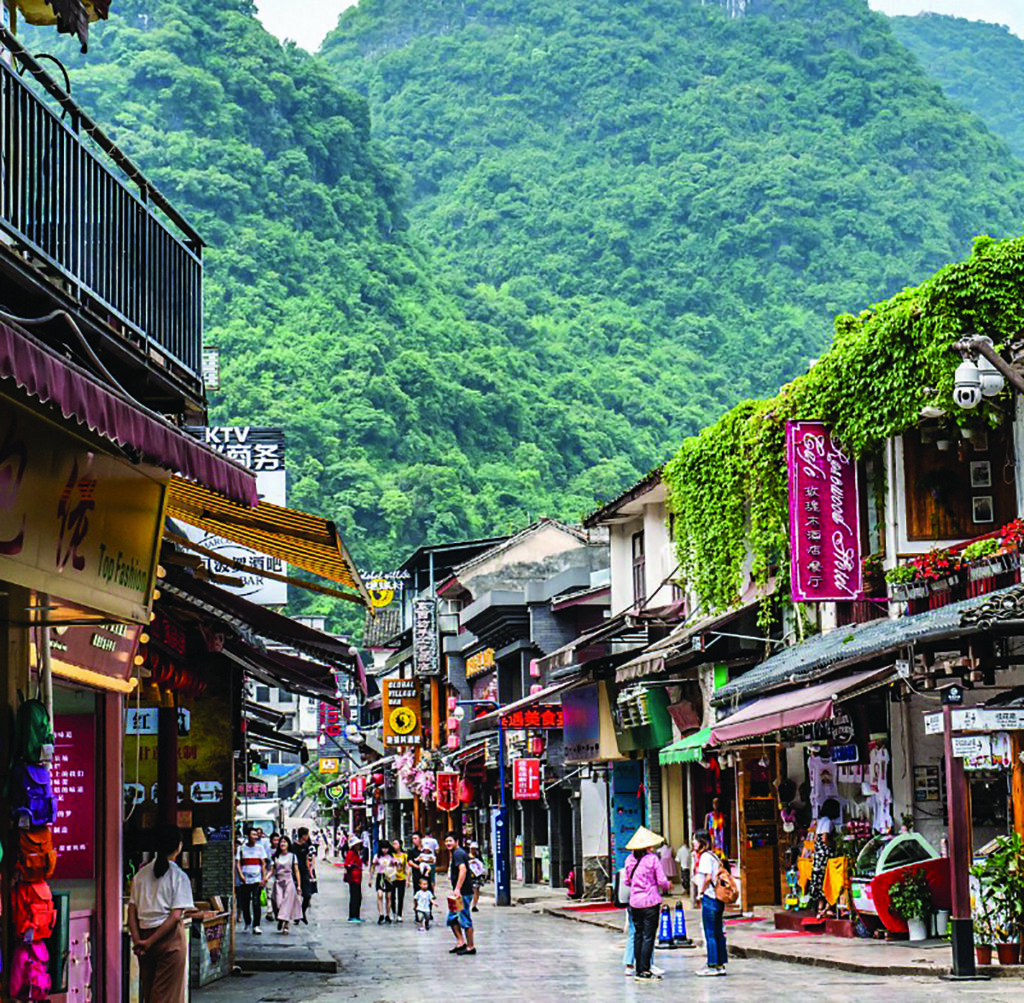
Reaching the peaks
For the best aspect of this 2,000-year-old city, climb one of the limestone outcrops. A hike to Catch-Cloud Pavilion at the top of Diecaishan is a well-worn route, revealing superb panoramic vistas of tiled-roofed Guilin and its beautiful meandering river, plus the surrounding mist-shrouded pinnacles and flat farmland. Guilin’s crags are renowned for their carvings and caves, and part of the joy of this strenuous climb is stopping off to see the inscriptions in Breezy Cave (with its near-permanent breeze), some dating back centuries.
Elephant Trunk Hill also offers stunning views, rising at the confluence of the Li and Peach Blossom rivers, with a Ming-era pagoda at its summit.
Marvel at the wonderful stalactite formation called the Sword-testing Stone, hanging inches above the floor, a feature of the pinnacle of Fuboshan (‘Wave subduing hill’), and a tall yellow-grey rock rising from the river apparently with the ability to calm the waters below.
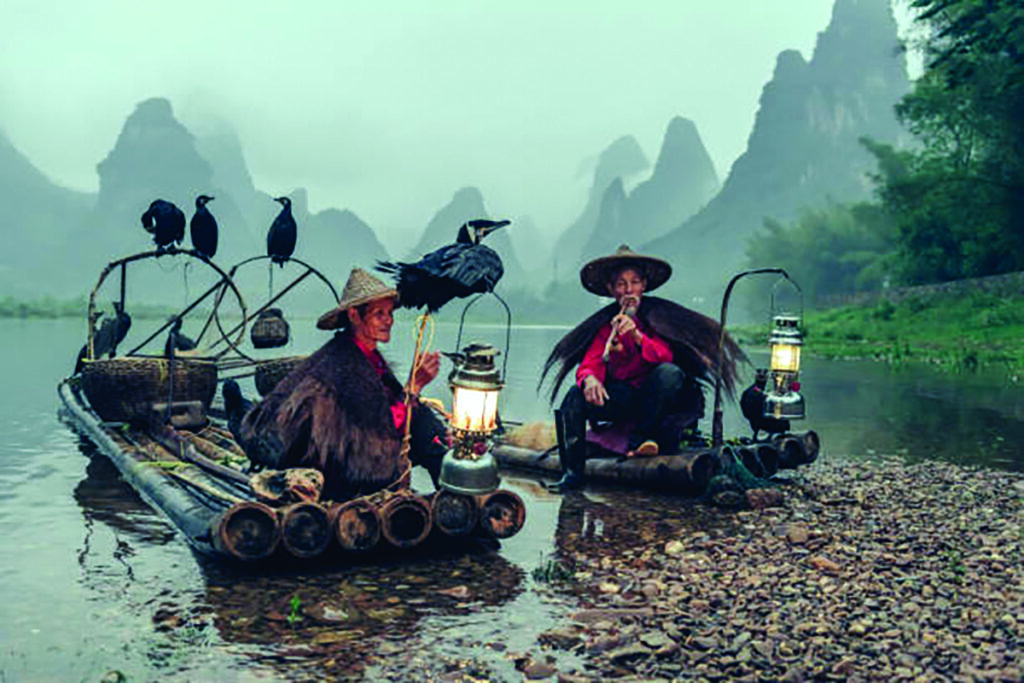
Jingjiang Princes’ Palace is sometimes described as a miniature Forbidden City. Pre-dating Beijing’s palace by 34 years, it has an encircling wall and four gates. Protecting the palace from the northern direction is Duxiu Feng (Solitary Beauty Peak), with steps to the summit where magnificent views await.
Guilin has wonderful public parks enclosing these peaks and architectural delights; the Green Belt Bridge from the Song era is in the District of the Two Lakes, a beautiful public park with gardens, walkways and pagodas. An 800-year-old banyan tree gives the lake – Rong Hu – its name. On the eastern side, Fir Tree Lake (Shan Hu) is overlooked by two traditional-style 40-metre-high pagodas, at Riyue Shuangta. The largest of the caverns at Reed Flute Cave can hold about 1,000 people and acted as a shelter during the Second World War.
Another fantastic cave is in Seven Star Park on the eastern side of the Li. Its magnificent stalactite and stalagmite formations have drawn visitors from across China for a thousand years. There are many legends surrounding the slab of white rock hanging from a ledge.

Sights of the riverbank
A must-do is a river cruise from Guilin to Yangshuo, with many tours beginning at the pier at Zhujiang. A majestic experience, amid a cluster of assorted river traffic, the cruise winds past small villages and the outlandish limestone pinnacles that crowd the river and are named after painters and poets. Between these peaks are idyllic sleepy villages and during the five-hour trip, the sights of South China’s rural life pass you by. Washerwomen squat on the floor near the riverbank, farmhands in conical hats work the rice terraces, white goats cling to the mountainside, and villagers fish from low bamboo rafts using trained cormorants.
Indeed, cormorant fishing has been practised for thousands of years in China and most hotels in Yangshuo and Guilin organise hour-long night-time viewing sessions. The marine birds swim just below the surface alongside a bamboo raft towards a light hanging from the bow. When a catch is made, the fisherman will retrieve the fish from its beak.
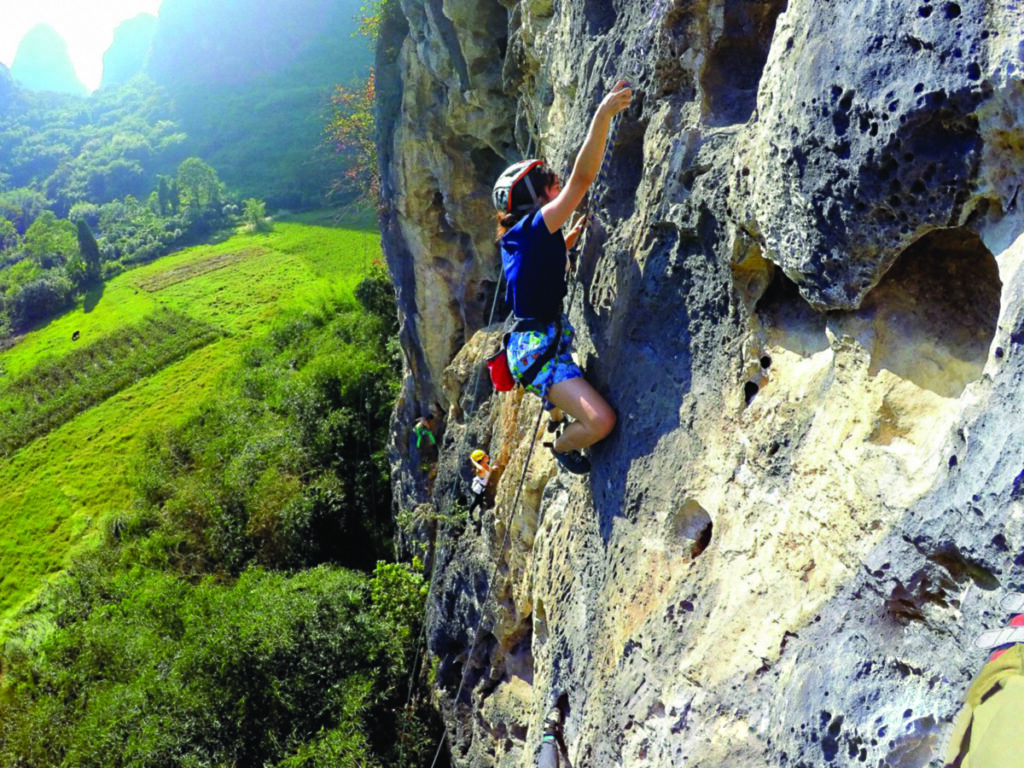
Sense of adventure
The river trip is a fantastic way to arrive in Yangshuo, which is far more laid back than Guilin and is a good base to explore the surrounding countryside. Yueliang Shan, with its distinctive crescent-shaped arch, is the most famous of the peaks in the area, and the area has become known for adventure travel with superb rock-climbing (considered the best in China), biking trips, hiking and caving (such as Heifo Xinshui Dong) opportunities. Hiring a bicycle guide will enhance your experience. Boating and ballooning can also be organised with local operators and rafting around Jade Dragon Bridge is always memorable.
Yangshuo provides a wide range of accommodations, and the line of restaurants, cafés, guesthouses, souvenir shops and hotels along Xi Jie (West Street) extends to the river. A hotel in the countryside is another option for great views over the dreamily beautiful karst topography. Top-of-the-range hotels in Yangshuo and the surrounding area may organise magnificent private sightseeing tours. On the itinerary will be a day trip to the 500-year-old Longji (Dragon’s Back) Rice Terraces and visits to the villages of Huangluo Yao and Ping’an to gain insights into the local life of different ethnic groups.
One thing to bear in mind is that scenic Guanxi has garnered a reputation as something of a haven for touts. So be prepared for this, and consider the purchasing of souvenirs as part of the experience.
The restaurants and bars offer plenty of diverse culinary options, from West and East, and lasagne and enchiladas to pad Thai followed by cheesecake. Cheap beer and excellent Yunnan coffee also draw in the tourist crowd. The Impression Liusanjie choreographed musical show, held in the evening next to the Li River, is another attraction, with the karst peaks providing an unforgettable backdrop.
High-speed trains run from Hong Kong to Guilin, with a transfer at Guangzhou or Guilin required to arrive at Yangshuo Railway Station (about a 5-hour trip in total). Guilin is also served by an international airport, which is located 28 kilometres southwest of the city. Visitors to this area never forget the experience.



